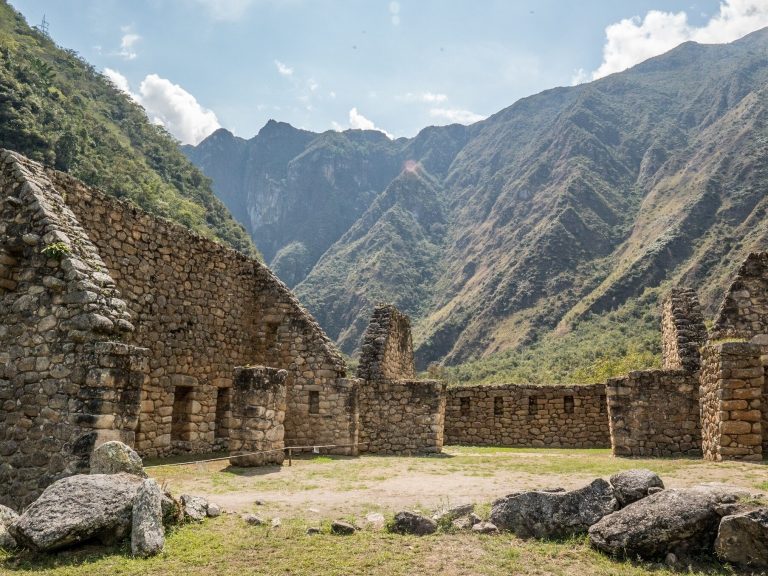Prof. Bogdziewicz received a prestigious award for young scientists. He studies how forests reproduce

– We know relatively much about how progressive droughts and increasing temperatures increase the mass dieback of forests. Little is known about how forests will recover after this. One of the main achievements of our research group is to describe what is actually happening – says Prof. Michał Bogdziewicz from the Faculty of Biology of the University of Adam Mickiewicz in Poznań and one of this year’s winners of the prestigious National Science Center Award for young scientists.
Aleksandra Gieracka, “Wprost”: You deal with forest ecology. What exactly are you researching?
Dr. hab. Michal Bogdziewicz: In our center, we deal with the ecology of forest reproduction, i.e. how trees produce seeds, when they do so and in what quantities, what consequences this has for new generations of trees and for the population of animals that eat the seeds.
How is such research conducted?
In many different ways. The basis is measuring how many seeds trees produce. It is surprisingly demanding, especially logistically and time-wise. Therefore, we know little about the reproduction of trees. It is relatively easier to measure other important demographic variables, such as plant growth or survival, in the long term. It is easier to monitor the survival of trees, because they do not die every day, so it is “enough” to return to the forest every few years or every decade and estimate it from the marked trees. And in the case of estimating the number of seeds, you have to go back to the same place every year, in different periods, you have to measure a lot of individuals. Trees show great variability in seed production, both between individuals and between years. There are so-called lean years, when sometimes trees do not produce anything for many years, and then in one year very, very much. As a result, it takes decades of monitoring to tell us anything meaningful about how trees produce seeds.
Do you know why this is happening?
There are two types of answers to this question, two sides of the coin – physiologically, i.e. how plants are able to create such variability, or evolutionarily – why such a life strategy evolved. As for the latter, the well-documented effect is the escape from seed consumers. Trees stand still, they cannot hide from seed consumers, so seed years are their alternative way. Because there are no seeds in lean years, the animals that specialize in eating such seeds simply starve and die or move to other places. Their number decreases and then in a year when there are a lot of seeds, this small population of consumers is not able to eat everything. This allows more seeds to survive and germinate, producing the next generation.
What species of trees are you researching?
On the one hand, we work on about 700-800 species studied by scientists from around the world and try to answer general questions on a global or continental level. We’re also doing more local research at the species level. In Poland, the main object of our research is common beech, oaks and rowan.
Such work is more about field research, but do you spend most of your time in front of a computer doing calculations?
It’s a seasonal job. Seeds appear for a relatively short period, in our climate zone in autumn. There are also experiments that require attention mainly in spring and autumn. The rest of the year is dominated by computer work.
You conduct your research in the context of climate change. What has already been established?
Until a decade ago, we had mostly suspicions about how climate change might affect tree reproduction. We know relatively much about how progressive droughts and rising temperatures increase mass forest diebacks. However, we know little about how forests will recover after such mass diebacks. One of the main achievements of our research group is to describe what is actually happening. A characteristic feature of seed years is the spectacular inter-annual variability in seed production, which is synchronized between trees. For example, in European beech, trees produce seeds together in the seed years – and the scale of synchronization is up to 1,500 km. This has huge consequences both for the trees themselves and, more broadly, for the entire ecosystem.
There are years when hundreds of thousands of trees either fall silent or produce tons of seeds together. Global warming makes it no longer look like that. The inter-annual volatility is collapsing, it is about 30 percent. lower than 40 years ago. Synchronization between individuals is also not as spectacular as it used to be.
What are the consequences for the environment?
Saturation of consumers ceases to work – trees no longer manage to alternate starvation and satiation of seed consumers as effectively as before. The same applies to the effectiveness of pollination of flowers, which is also enhanced by seed years, which weakened with warming. These interactions reverse the picture of the situation. On the one hand, thanks to warmer temperatures, trees produce more flowers and seeds. However, they are either eaten by animals or will not be pollinated. Ultimately, therefore, the reproductive potential of trees decreases because the seed years collapse. Recognizing that reproduction is collapsing is the first step to counteracting it.
What is the next step?
We want to understand how general the phenomenon of the breakdown of seed years is, whether there are species that are more or less resistant to change in this matter, what is the scale of the problem and whether we can predict where the problem may be particularly large – or vice versa – what are the characteristics of environments that are relatively resistant to change.
Can these findings be a clue for foresters? Could this translate into, for example, what species will be planted in the past?
Definitely yes. Or what species will need help to successfully produce the next generation. We can look at a forest that looks great at first glance, but a tragedy can happen in the background. Tree mortality in the early stages of life is enormous, hundreds of thousands of seeds are needed to produce a single tree that will join the canopy layer. If, as a result of climate warming, seed mortality has increased by half, is this population still able to produce another generation? It depends on many factors, most of which are poorly understood.
We have been hearing for a long time that climate change has a negative impact on forests. How bad is it?
Europe is a continent that warms up and dries out very quickly. This is a region of the world that is particularly affected by the effects of climate warming and our forests are not indifferent to it.
Recently I read a paper published in “Global Change Biology”, which showed that the scale of forest disturbances, such as windbreaks, fires and insect outbreaks, is accelerating dramatically in Europe. For example, forest disturbance caused by insect outbreaks has doubled in the last 20 years alone.
Of course, there have been large-scale droughts in the past, but usually in the following years the weather was milder and the trees had time to recover. Now drought is becoming the new normal. In many regions of Europe, drought has been going on for several years. This year I was working on a scholarship in France, financed by the Polish National Agency for Academic Exchange, and I watched through the window of my house as already at the end of June the forests in the Alps were losing their leaves. We had fall in the middle of summer. That was because it was the hottest and driest summer in decades, and for the second consecutive year. Even with such a dramatic drought, the trees could cope – but if the extreme is repeated all the time, it causes the large-scale dieback that we are now observing.
For several years, we have also observed catastrophic forest fires every year.
This is another dramatic example. We in Poland do not experience this on a large scale, so it may seem like a relatively distant problem. However, when you look at the data from North America or Australia, or talk to scientists from there, a grim picture emerges. Forests can burn like matches. Many tree fires can survive because the moist fuel of trees does not burn easily – thicker parts or trunks tend to burn rather infrequently. However, drought causes that it happens that even the roots burn out. The intensity and scale of this phenomenon is worrying.
How do you assess the systemic response to these challenges? Is it sufficient or does more work need to be done?
It seems to me that there is a growing understanding of the problem and motivation among European and Polish decision-makers to counteract it. Foresters see in their forests that the problem exists. They see that trees cannot cope with drought and are looking for answers on what to do to make the forests we manage more resistant to climate change.
We need research that will allow us to develop such strategies and ensure that forests stay with us in the form we want them to perform their ecosystem functions, such as supporting biodiversity or producing wood.
From the new year, the Forest Biology Centre, whose work you will manage, starts its operation. What will this center do?
This is the answer to the challenges I am talking about, with a particular focus on reproduction, because this is the part that has been neglected for decades due to the logistical difficulties associated with data collection. This has changed in recent years. Data has begun to flow in a wider stream and we have the opportunity to answer questions that have been bothering us for decades. I would like our team to become a global center that will answer these questions in the best quality.
You are the winner of this year’s National Science Center Award for young scientists in the field of life sciences. Also this year you received a prestigious European Research Council (ERC) grant. How important are these achievements for your research and career development?
This allows research to be conducted on a scale that is required by the described challenges.
The NCN as an organization is crucial for the functioning of Polish science. If there was no NCN, many scientists in Poland would not have the conditions to conduct world-class research, it is possible that they would have to conduct it in other countries.
The ERC grant allows me to build a research center and group. In the next few years, I will hire people to work with me, which I hope will significantly speed up finding answers to the questions that bother us.
Financing is a key issue. What other challenges do scientists face?
My biggest limitation is always time, but I don’t see simple solutions here. Funding for our group is currently secured, we have people interested in the subject, so we just have to keep working. I can’t complain.
You are a researcher, and do you also consider yourself an ecologist in the popular understanding of a person fighting for the environment?
Honestly, no. Environmental protection is very important to me and ecology as a science is extremely important to me. We have one planet to protect, we don’t have planet B, no matter what our beloved billionaires say. I’m a scientist, I want to know how ecosystems on earth function, but I’m not an activist.






